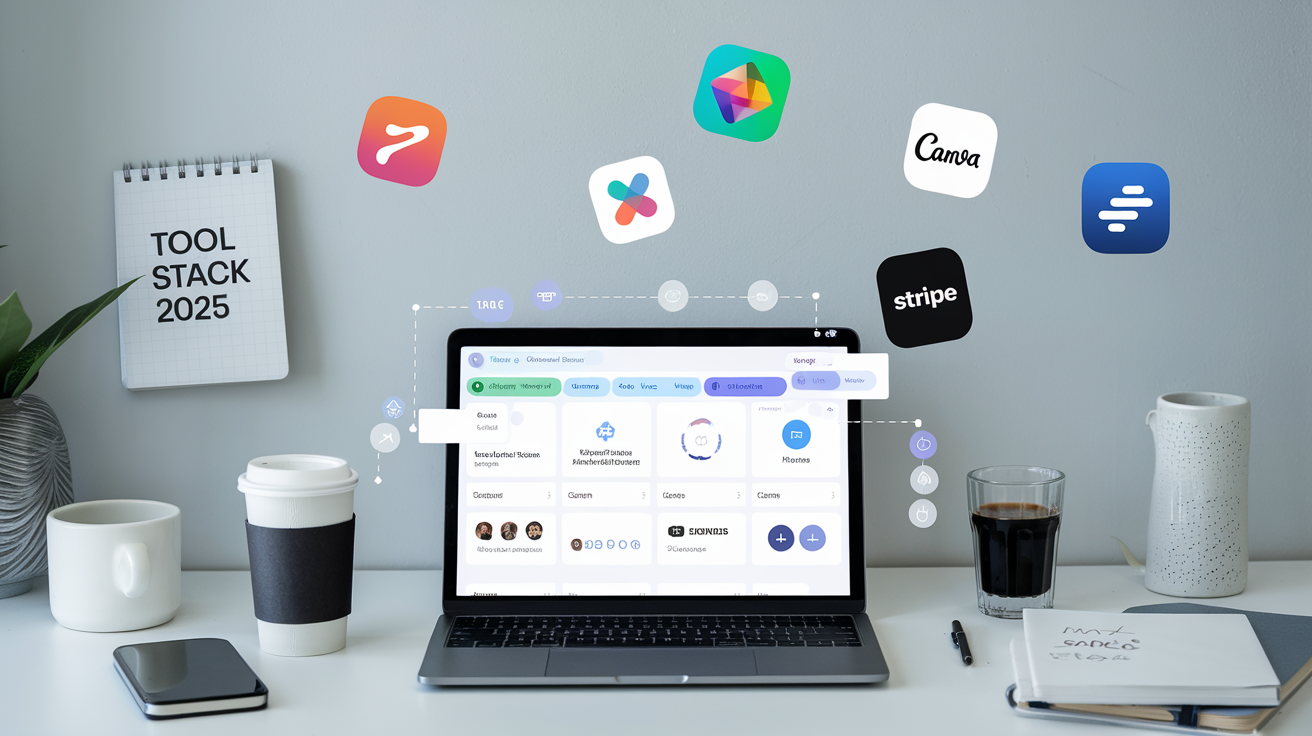Why Most Digital Products Fail and How to Ensure Yours Succeeds

You spend weeks crafting a digital product. You polish the content, design every page, and finally hit publish. But instead of seeing a wave of sales, there’s silence. No traction, no momentum, no growth. Meanwhile, others are making it look easy.
Here’s the real reason most digital products fail. It is not because of market saturation or a lack of talent. It is because most creators skip the foundational steps that turn a good idea into a product people want to buy.
In this detailed guide, you will learn exactly why digital products underperform and what to do to make yours successful from day one.
Understanding Why Most Digital Products Fail
Over ninety percent of digital products never generate meaningful revenue. This isn’t about bad luck. It is about missing steps.
Creators often dive straight into building their product without confirming that anyone wants it. They launch before building an audience. They guess at pricing. They neglect follow-through. In short, they treat their product like a project, not a business.
But the digital product game is not about creating content. It is about solving a specific problem for a specific group of people—and doing it in a way that builds trust, value, and results.
The Digital Product Success Journey
Let’s start with the blueprint. Successful digital products tend to follow this sequence:
Step 1: Understand Your Audience
You need to know who your product is for. Go beyond general demographics. What keeps them stuck? What are they frustrated with? What solutions have they tried before that did not work?
Step 2: Validate the Problem
Before you create anything, confirm that the problem is real and urgent. Talk to potential customers. Ask what they are struggling with and whether they would pay for a solution. The best products solve problems that people are already searching for answers to.
Step 3: Build a Simple, Focused Solution
Your first version should be a minimum viable product. It does not need to be perfect or fancy. It needs to work. Solve one clear problem with one simple offer.
Step 4: Offer Value First
Before asking for money, give value. Share tips. Teach small lessons. Show up consistently so people begin to trust you. This builds momentum for the sale.
Step 5: Launch With Purpose
Your launch is not just an announcement. It is a campaign. Use storytelling, social proof, urgency, and clarity. Give people a reason to act now.
Step 6: Automate Evergreen Sales
Once your launch is complete, set up email sequences and funnels to continue selling your product over time. Your content should keep working even while you sleep.
Step 7: Expand With Ecosystem Thinking
Think beyond one product. Offer related solutions. Create upsells, downsells, and bundles that support your audience at every step of their journey.
Product-First Thinking Leads to Failure
The biggest mistake creators make is falling in love with their idea before testing it. They spend time, money, and energy building something they think people want—without checking if anyone is actually willing to pay for it.
Start with the problem, not the product. Every winning product begins with three things:
-
A clear target customer
-
A painful, specific problem
-
A unique, results-focused solution
When these three elements are locked in, sales become much easier.
How to Validate Before You Build
Validation does not require a large audience or a complicated strategy. It requires listening.
Reach out to twenty or thirty people who resemble your ideal customer. Ask about their biggest challenge in a specific area. Pay close attention to the exact words they use.
Ask questions like:
-
What have you already tried?
-
What hasn’t worked for you?
-
What would an ideal solution look like?
-
What would you be willing to pay for that solution?
You are not pitching. You are listening for patterns. If you hear repeated frustrations and unfulfilled needs, you are onto something.
When someone says, “I wish there was a way to…” — write that down. That is the seed of a great product.
Recommended Tools for Every Stage
You don’t need to do everything from scratch. The right tools can speed up your process and reduce stress.
Research and Validation
-
Google Forms or Typeform: Use for simple surveys
-
Reddit, Facebook Groups, Quora: See what real people are asking
-
Answer the Public, AlsoAsked: Identify high-interest questions
Creation and Design
-
Canva: Design ebooks, templates, and workbooks
-
Loom: Record videos quickly and easily
-
Notion, Trello: Organize product ideas and content
Sales and Delivery
-
Gumroad, ThriveCart: Set up simple checkouts
-
Podia, Teachable: Deliver online courses and memberships
-
ConvertKit, Flodesk: Build your email list and automate sales
Marketing and Analytics
-
Zapier, Make: Automate your workflows
-
Buffer, Metricool: Schedule and analyze social content
-
Hotjar, Google Analytics: Track user behavior on your website
Value-Based Pricing Wins Every Time
Too many creators price their products based on effort. But customers do not care how long it took you to create something. They care about results.
Price your product based on the transformation it offers. A short, actionable guide that helps someone land their first client may be worth far more than a long, complicated course.
Instead of selling a file, sell a solution.
Shift Your Offer to Match Value
Imagine you created a budgeting spreadsheet. You could sell it as “A Budget Tracker” for a few dollars. Or you could reframe it as “A Financial Clarity System That Helps You Save $500 in 30 Days” and sell it for a premium.
Add small extras—video tutorials, real-life use cases, or bonus templates—and raise the perceived value of your offer.
Build Trust Before the Sale
People do not buy from strangers. They buy from people they trust.
Here is how you build trust:
-
Share free, valuable content consistently
-
Tell stories that show you understand their problem
-
Collect and publish specific testimonials
-
Use video wherever possible to build connection
The most persuasive testimonial is not generic praise. It is a result. For example: “I used this strategy and signed three new clients in ten days.”
Make Your Product Easy to Complete
Completion equals results. And results lead to referrals and repeat customers.
To improve your product’s effectiveness:
-
Include quick wins in the first module
-
Break lessons into short, digestible pieces
-
Add templates or worksheets for easy implementation
-
Provide accountability tools, such as daily check-ins or challenges
Help your customers finish what they started. Their success becomes your best marketing.
Start Marketing Before You Finish the Product
Marketing is not something you do after the product is built. It starts the moment you begin creating.
Share sneak peeks. Ask your audience for input. Teach small parts of your method in free content. Get people excited and involved.
Build your email list early using a related freebie. For instance, if your product is a habit tracker, your freebie could be a one-week mini version.
Your sales page should answer these questions:
-
What problem does this solve
-
Who is it for
-
What makes it different
-
What transformation can I expect
-
Why should I trust you
Clarity beats hype. Be honest, confident, and direct.
Launch With Energy and Urgency
A quiet launch will produce quiet results. Treat your launch like an event. Make it exciting, time-limited, and action-focused.
Include:
-
A short value-packed email or video series
-
A bonus for early buyers
-
A temporary price or limited-time offer
-
A real deadline with clear consequences
Whatever you promise, deliver it. Integrity matters more than sales.
Think Bigger Than One Product
Long-term digital business success does not come from a single hit. It comes from creating a product ecosystem.
You might start with:
-
A low-cost template
-
Then offer a step-by-step course
-
Then offer a coaching upgrade or membership
Each product supports the next. And each happy customer becomes a loyal buyer over time.
Avoid These Common Mistakes
Even experienced creators fall into these traps:
-
Waiting too long to launch
-
Overloading with content instead of focusing on outcomes
-
Skipping customer feedback
-
Ignoring competitors instead of learning from them
-
Forgetting to support buyers after purchase
Every product is a learning experience. Launch, learn, improve.
Final Thoughts: Start Small, Stay Consistent
The reason most digital products fail is not a lack of talent. It is a lack of structure.
When you take the time to validate, build with purpose, and lead with value, your product is no longer just content. It becomes a solution. A tool. A bridge to transformation.
You do not need to go viral. You need to solve one real problem for one real person—and do it well.
Start now. Talk to your audience. Offer something simple. Listen. Improve. Grow. And remember: clarity, trust, and consistency will always win.
Your future customers are already searching. Meet them where they are and guide them to where they want to be.








